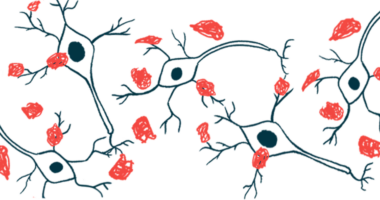New test for Parkinson’s disease shows 95% accuracy: Study
Using samples of cerebrospinal fluid allows direct alpha-synuclein testing

A newly developed test was able to distinguish — with an accuracy of 95% — between individuals with and without Parkinson’s disease, using samples of cerebrospinal fluid (CSF), the liquid surrounding the brain and spinal cord, according to a new study from Germany.
The researchers noted that Parkinson’s often is not diagnosed until the disease is in its later stages, and its hallmark symptoms, like tremor and walking problems, are more evident. By that time, however, the brain is often irreversibly damaged, per the team.
Now, this novel test, which measures a protein called alpha-synuclein that is misfolded in Parkinson’s patients, is showing promise for helping reliably diagnose Parkinson’s disease — even in its early stages.
“In the future it could be used to monitor disease progression, guide treatment decisions, and accelerate the development of new drugs,” the researchers wrote.
The test uses samples of CSF, collected via a spinal tap, to directly test misfolded alpha-synuclein — a molecular hallmark of Parkinson’s and related conditions.
The scientists detailed their findings in “Alpha-synuclein misfolding as fluid biomarker for Parkinson’s disease measured with the iRS platform,” a study published in the journal EMBO Molecular Medicine.
Use of new technique may allow Parkinson’s diagnosis at early stage
Parkinson’s is caused by a progressive loss of the brain’s dopaminergic neurons, which are the nerve cells that produce dopamine, a signaling molecule essential for motor control.
Diagnosing the condition mainly relies on the onset of motor symptoms, including slowness of movement, medically known as bradykinesia, rigidity, resting tremors, and postural instability. Still, by the time of symptom onset, the disease is often advanced, with more than half of the dopaminergic neurons already lost.
“There is an unmet medical need for fluid biomarkers to improve diagnostic accuracy based on a biological classification,” the researchers wrote. The team noted that such biomarkers already have been established for Alzheimer’s disease, which also is marked by progressive neurodegeneration.
In Parkinson’s patients, the misfolding of the protein alpha-synuclein into toxic clumps called Lewy bodies is thought to interfere with the function of dopaminergic neurons and contribute to their death.
Klaus Gerwert, PhD, a study lead, noted that “these misfoldings make the protein sticky, leading to the formation of larger complexes.”
Those complexes are known as oligomers, according to Gerwert, founding and managing director at the Center for Protein Diagnostics at Ruhr University Bochum (PRODI) in Germany, and CEO of Betasense, a university spinoff.
“The oligomers then produce long fibrillar filaments and cause the aggregation of these filaments into macroscopically large Lewy bodies in the brain,” Gerwaert said in a university news story on the team’s discovery.
Now, researchers from PRODI and Betasense found that measuring misfolded alpha-synuclein in the CSF — using this new technique — can aid in reliably diagnosing Parkinson’s at an early stage.
The technique is based on a patented immuno-infrared sensor (iRS) platform technology from Betasense, which can directly detect folded versus misfolded alpha-synuclein in bodily fluids that absorb different wavelengths of light.
iRS technology has already been applied to Alzheimer’s, which is characterized by the misfolding of amyloid-beta in the brain. A study showed it was able to assess the risk of Alzheimer’s dementia at a later stage with high accuracy, up to 17 years before diagnosis.
“We have now transferred this approach to Parkinson’s for the misfolding of [alpha-synuclein],” Gerwert said.
Test for Parkinson’s disease uses same approach as one for Alzheimer’s
The team used the iRS platform to test 134 CSF samples. The discovery group involved 59 individuals, of whom 17 were diagnosed with Parkinson’s. The remaining 42 people, who had no signs of neurodegenerative diseases, served as controls.
The validation group consisted of 75 individuals, 40 of whom had Parkinson’s and five with multiple system atrophy (MSA), a neurodegenerative disorder with similar symptoms to Parkinson’s. Because misfolding of alpha-synuclein is also known to occur in MSA, both Parkinson’s and MSA patients were called the misfolding-positive group. All other participants were grouped as one disease control. That group comprised those with corticobasal degeneration, frontotemporal dementia, and progressive supranuclear palsy.
First, the team demonstrated that the ratio of two iRS wavelengths of light, 1656.0 to 1623.5 per cm, significantly distinguished between folded and misfolded alpha-synuclein.
Then, using this ratio, the researchers found the ability to distinguish Parkinson’s/MSA patients from controls was 90% in the discovery group and 86% in the validation group. When both datasets were combined, the classification accuracy was 90%.
The structure-based biomarker … now enables a biological classification for [Parkinson’s disease] for timely identification and intervention, potentially slowing the disease progression and improving patient outcomes.
Based on the levels of the wavelength ratio, the participants were then grouped again. One group comprised individuals with high levels of misfolded alpha-synuclein, indicating they likely had Parkinson’s or MSA. The other had those with low levels, who did not show signs of the disease.
When comparing just these two groups, the test identified Parkinson’s or MSA with 95% accuracy. It correctly detected 97% of people who had the disease (sensitivity) and correctly identified 92% of people who did not have it (specificity).
iRS readings that fell between these two levels, referred to as the intermediate group, reflected a continuum of misfolding between a healthy and diseased state. These individuals may have an elevated risk of developing diseases related to alpha-synuclein misfolding compared with unaffected individuals, the team noted.
“The structure-based biomarker, which is already established for Alzheimer’s, now enables a biological classification for [Parkinson’s disease] for timely identification and intervention, potentially slowing the disease progression and improving patient outcomes,” the researchers wrote in detailing the study’s impact.








